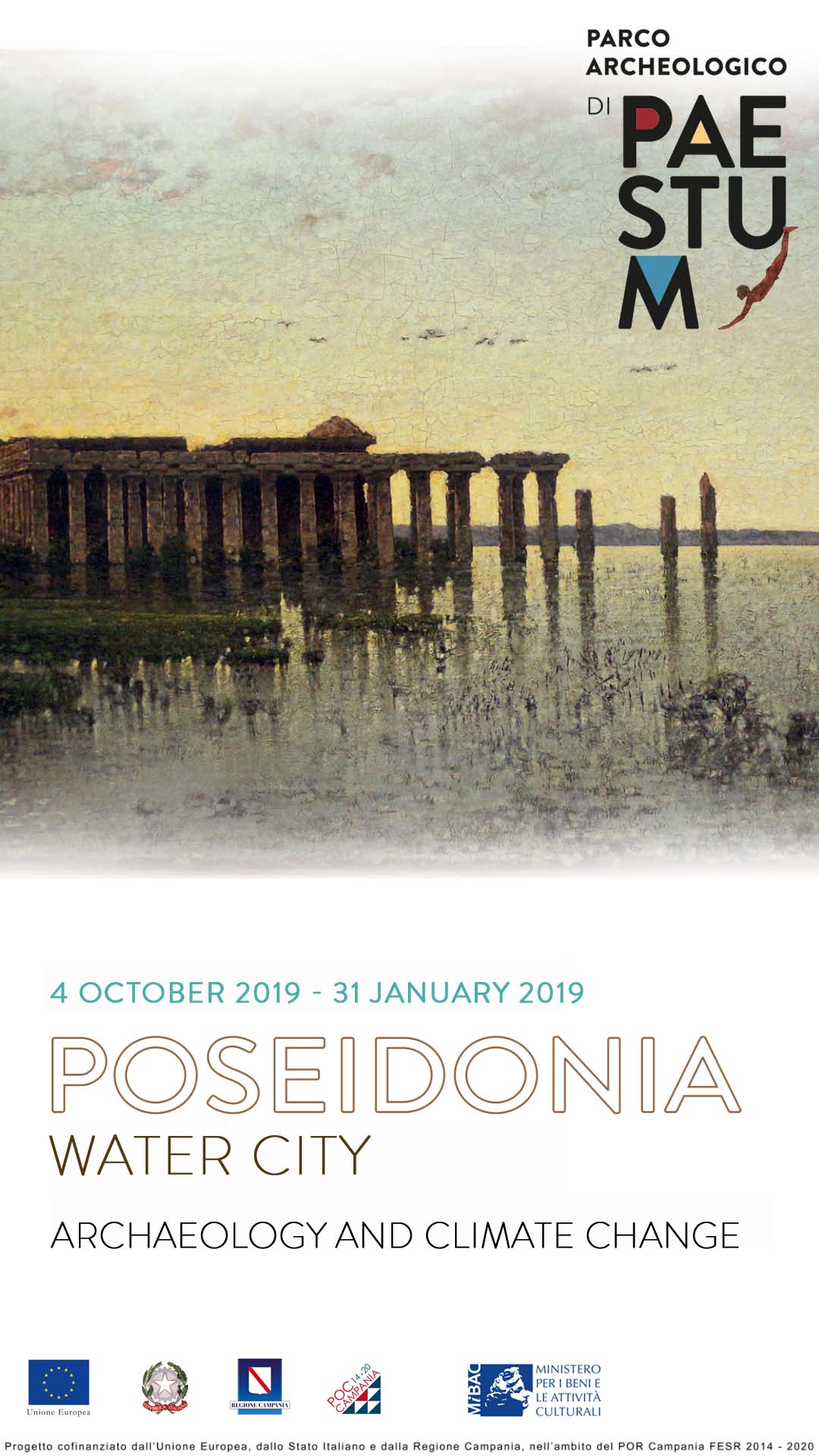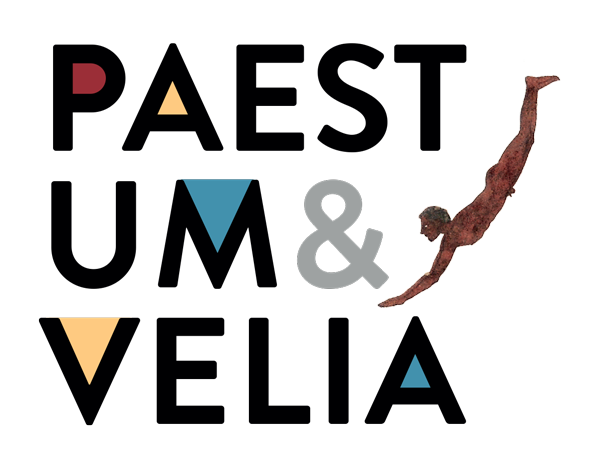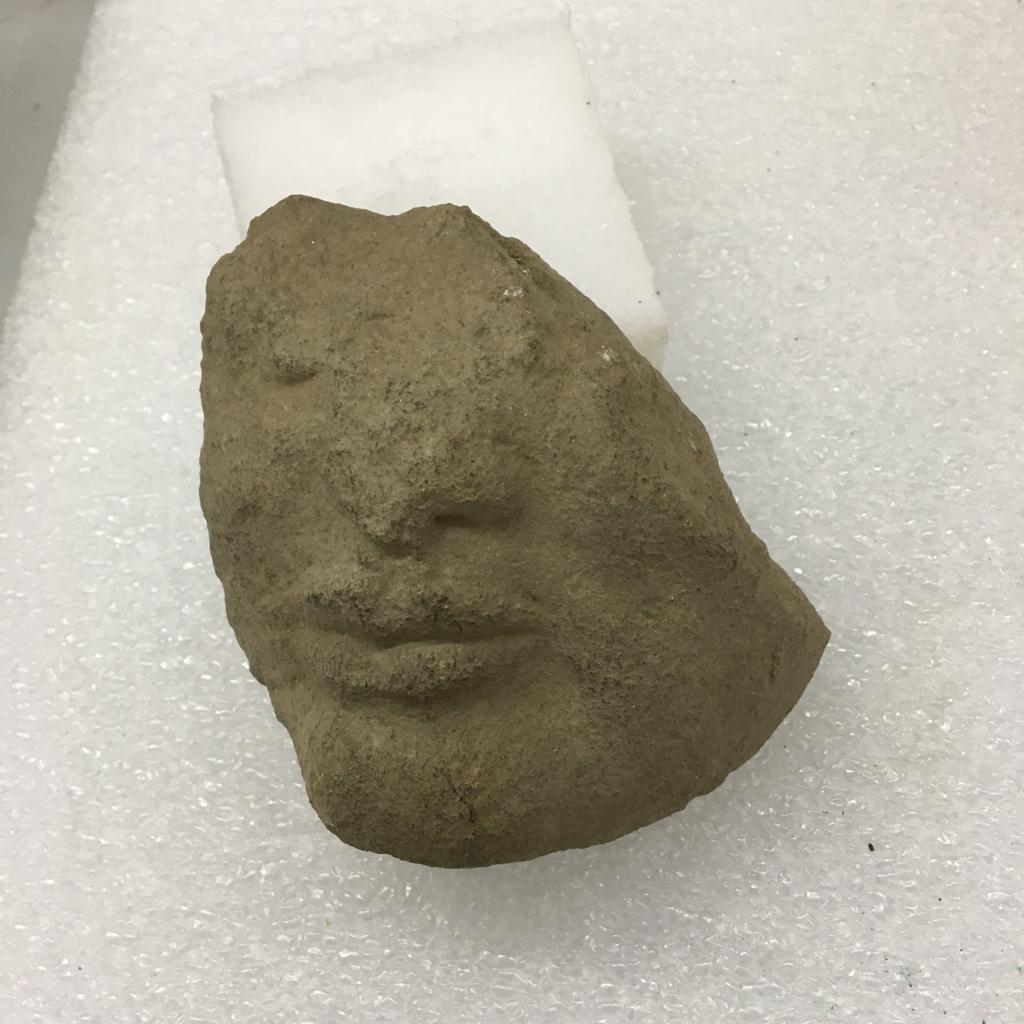Imagine Paestum without us. Rising sea levels, desertification, marine pollution and soil erosion combine to make this a real scenario.

How can understanding the past better avoid this chilling apocalypse?
This is the theme of Poseidonia, water city, archaeology and climate change: through a major reinterpretation of the history of Paestum in southern Italy, about 100 km south of Naples, to give memory a future – in a world ravaged by present and impending disaster to give us back agency and hope.
Curated by Paul Carter, Adriana Rispoli and Gabriel Zuchtriegel, Poseidonia brings together archaeologists, environmental scientists, cultural historians and artists in a brilliant reconstruction of how Paestum was founded by Greek colonists around 600 BC, flourished and, ultimately, abandoned – it is the story of a past that speaks to our future. Named for the god of sea and earthquake, Poseidonia, as the city was originally called, owed its unique coastal culture to a careful management of land and water resources. But this is over. Models developed by the Euro-Mediterranean Center for Climate Change predict a future where the Sele plain is increasingly abandoned.
Director of the Paestum Archaeological Park, Gabriel Zuchtriegel, and co-curator, Anglo-Australian cultural historian, Paul Carter, explain: ‘Poseidonia is the first exhibition to locate climate change within the long history of ancient Greek imperialism, colonization of the Mediterranean and the ultimately unsustainable impact of “civilization” on the environment. It shows how changing sea levels in the past created the Paestan landscape, how unique travertine-forming waters provided the building materials of the city; it reveals how ordinary men and women, through art and ritual, looked after a creative environment. But it also reveals the longterm impact of economic exploitation, human enslavement and environmental destruction. It is a lesson for our times.’
Our goal, the curators say, ‘is to understand better a history of change. Highlighting the capacity of past societies to adapt and rebuild, we want to show the relevance of the past for the future: our responsibility as custodians of cultural heritage is the constant reinterpretation of past achievements in the light of what we know and experience in the present.’
The catalogue accompanying the exhibition, written by 25 leading figures in the field of Mediterranean environmental and cultural studies, is a must-read for anyone interested in the future of the past in a time of climate change. Among its contributors is Andrea Marcolongo, author of the bestselling The Ingenious Language: nine epic reasons to love Greek and The Heroic Measure, who writes, ‘Before being associated with the oceans, Poseidon was the god called by Homer and Hesiod gaiéochos, “he who fertilizes the earth” or ennosìgaion, “he who the same earth shakes with earthquakes”. Naming their city for a god who both nurtures and destroys, the first Poseidonians coming from Sybaris around 600 BC, founded a city built on this paradox, one that we continue to live with and to understand.
The inspiration for the exhibition, Zuchtriegel recalls, was a visit to The National Gallery of Rome in 2018, when he happened to see a painting by Neapolitan artist, Federico Cortese Ruins of a world that was: executed in 1892, it shows the temples of Paestum under water … ‘I was reminded of a recent study in Nature Communications, which forecast that within 100 years rising sea levels and coastal erosion would seriously damage 42 out of 49 UNESCO Heritage Sites around the Mediterranean (including Paestum).’
Cortese’s painting is uniquely borrowed for the exhibition, whose other exhibits (many shown for the first time) all come from the Museum’s own holdings. Paestum is also famous for the tomb painting known as ‘The Diver’, a composition that shows a human being in harmony with land and water. Inspired by this painting, Neapolitan sculptor, Carlo Alfano, created a sculptural homage in 1968: the six cylinders of the sculpture are referenced in the original cylindrical showcases designed for the exhibition. Outside the Museum, the exhibition is completed by Metamofosi, a new videomapping commission by artist Alessandra Franco: projected onto the columns and pediment of the building popularly known as the Temple of Neptune, Franco’s video sequence explores water’s grip on the imagination with particular reference to the creation of Poseidonia, a ‘water city’.
Informations:
Title: Poseidonia water city. Archaeology and climate change.
Dates: 4 october 2019 – 31 January 2020
Place: National Archaeological Museum of Paestum
Open every day (except Mondays) from 8.30 am to 7.30 pm (last admission 6.50 pm).
Entrance to the exhibition is free upon presentation of the ticket Museum + Archaeological Park , or the annual ticket Paestum Mia, or the ‘Adopt a Block of the City Walls’ card.
Website: http://poseidonia-citta-dacqua.eu/






